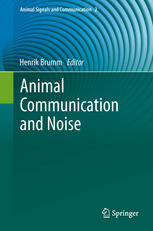

Most ebook files are in PDF format, so you can easily read them using various software such as Foxit Reader or directly on the Google Chrome browser.
Some ebook files are released by publishers in other formats such as .awz, .mobi, .epub, .fb2, etc. You may need to install specific software to read these formats on mobile/PC, such as Calibre.
Please read the tutorial at this link: https://ebookbell.com/faq
We offer FREE conversion to the popular formats you request; however, this may take some time. Therefore, right after payment, please email us, and we will try to provide the service as quickly as possible.
For some exceptional file formats or broken links (if any), please refrain from opening any disputes. Instead, email us first, and we will try to assist within a maximum of 6 hours.
EbookBell Team

4.3
78 reviewsThe study of animal communication has led to significant progress in our general understanding of motor and sensory systems, evolution, and speciation. However, one often neglected aspect is that signal exchange in every modality is constrained by noise, be it in the transmission channel or in the nervous system. This book analyses whether and how animals can cope with such constraints, and explores the implications that noise has for our understanding of animal communication. It is written by leading biologists working on different taxa including insects, fish, amphibians, lizards, birds, and mammals. In addition to this broad taxonomic approach, the chapters also cover a wide array of research disciplines: from the mechanisms of signal production and perception, to the behavioural ecology of signalling, the evolution of animal communication, and conservation issues. This volume promotes the integration of the knowledge gained by the diverse approaches to the study of animal communication and, at the same time, highlights particularly interesting fields of current and future research.